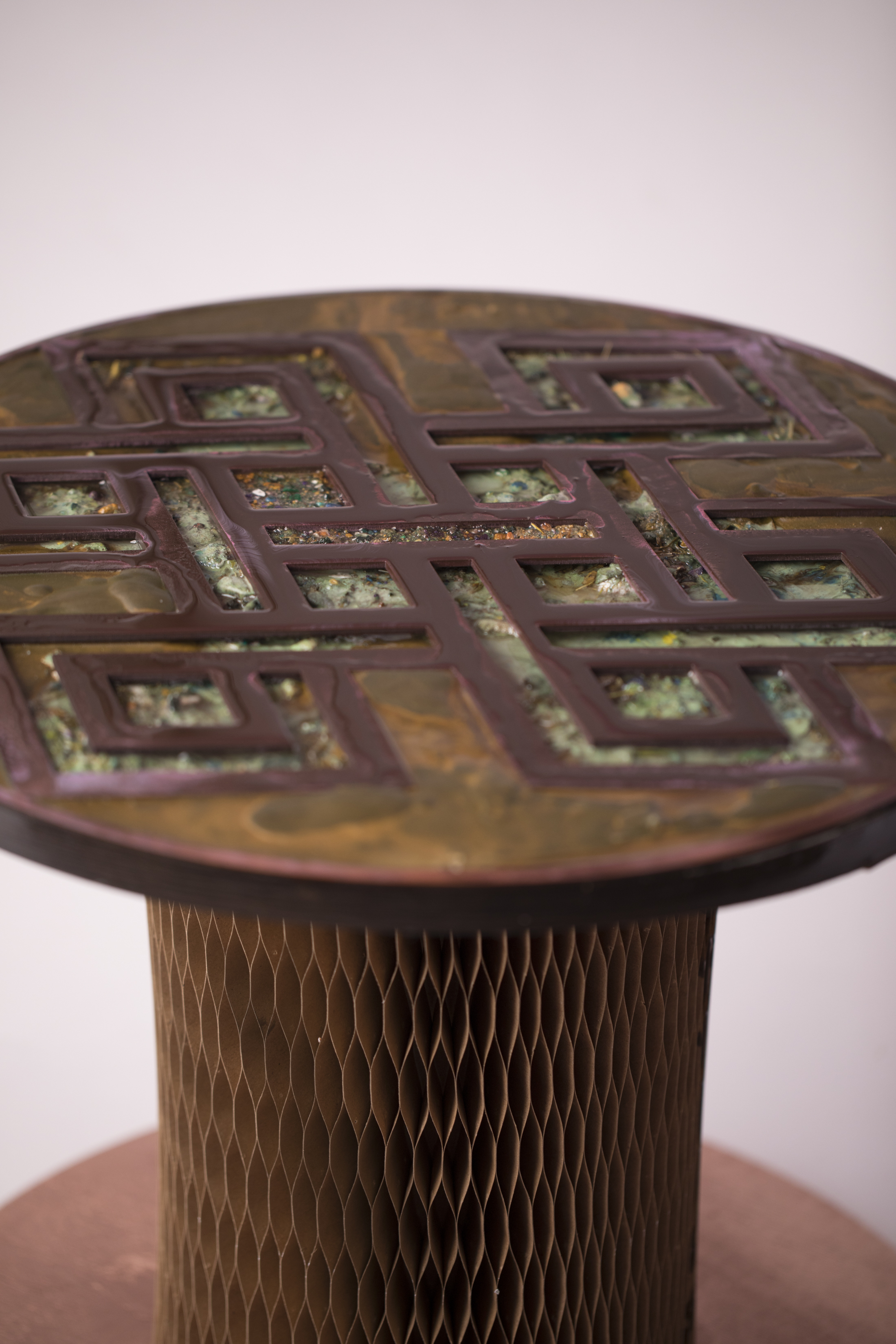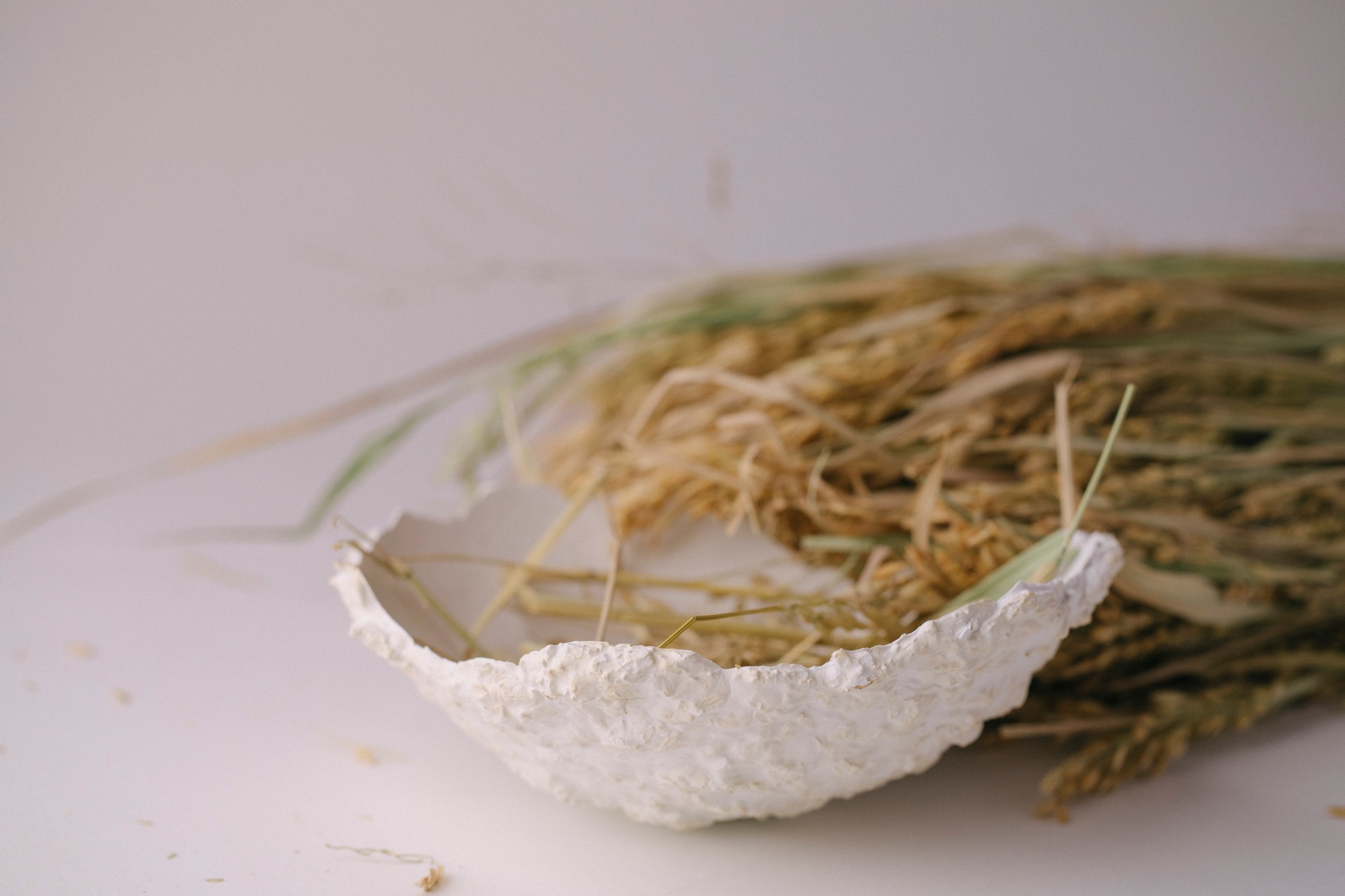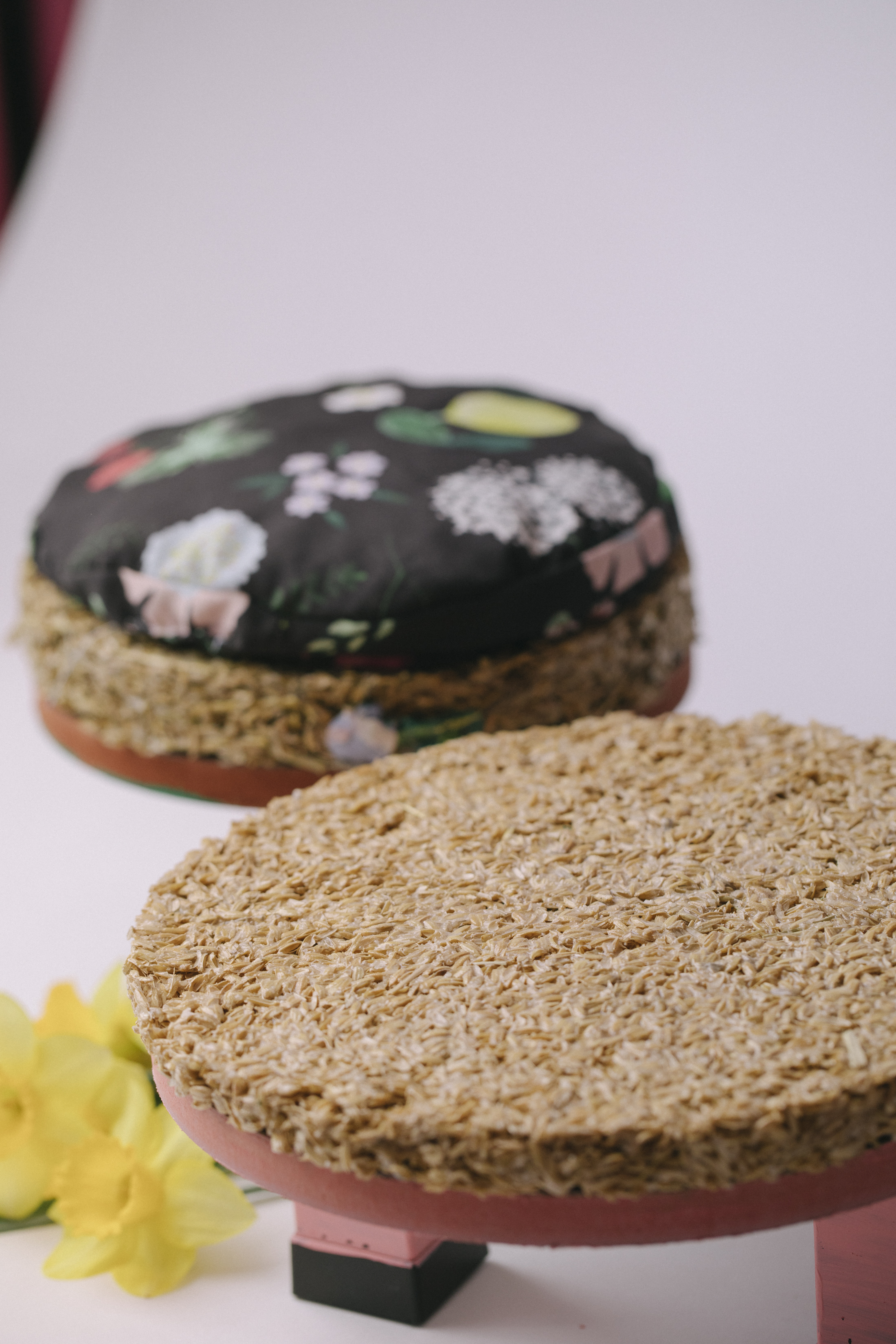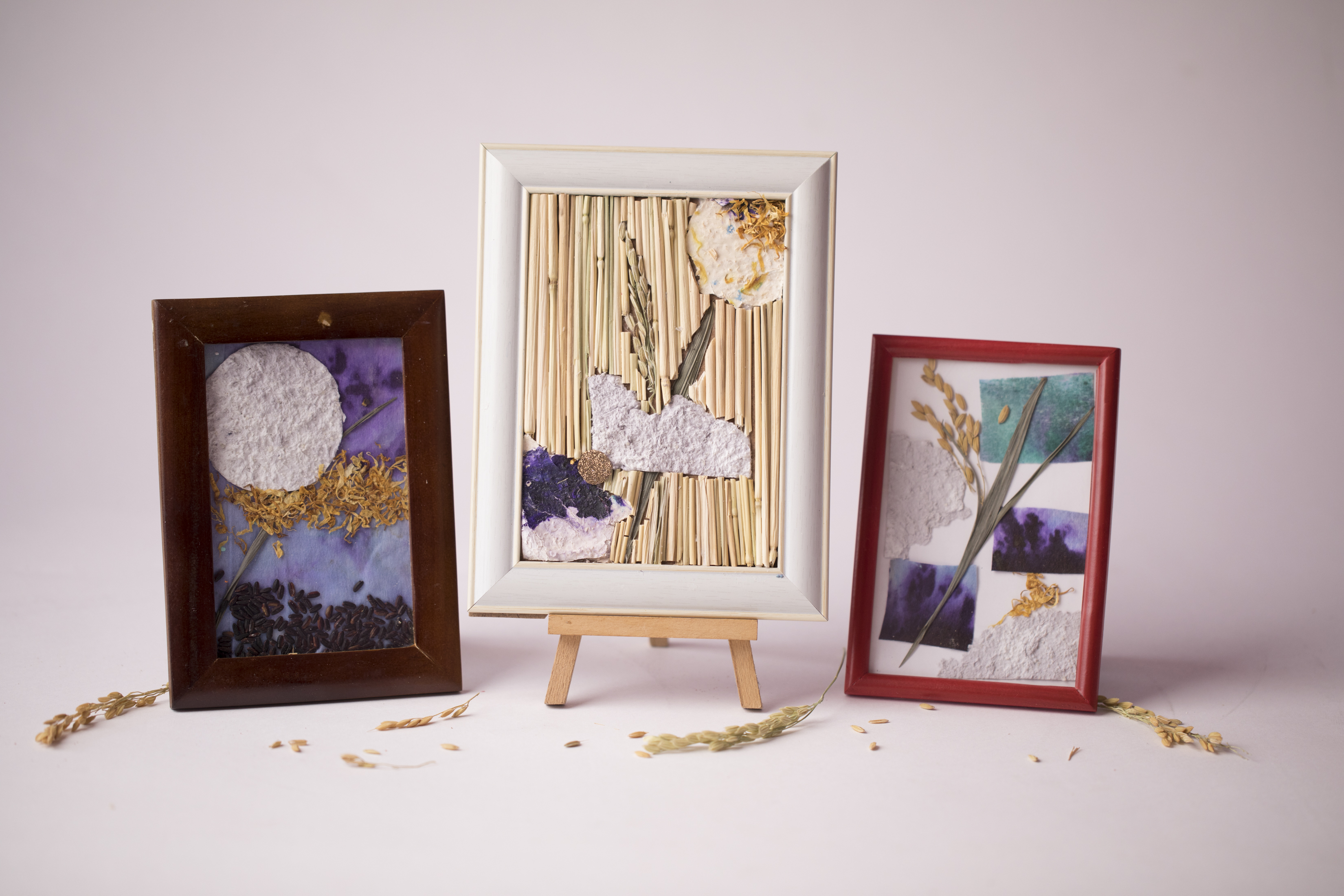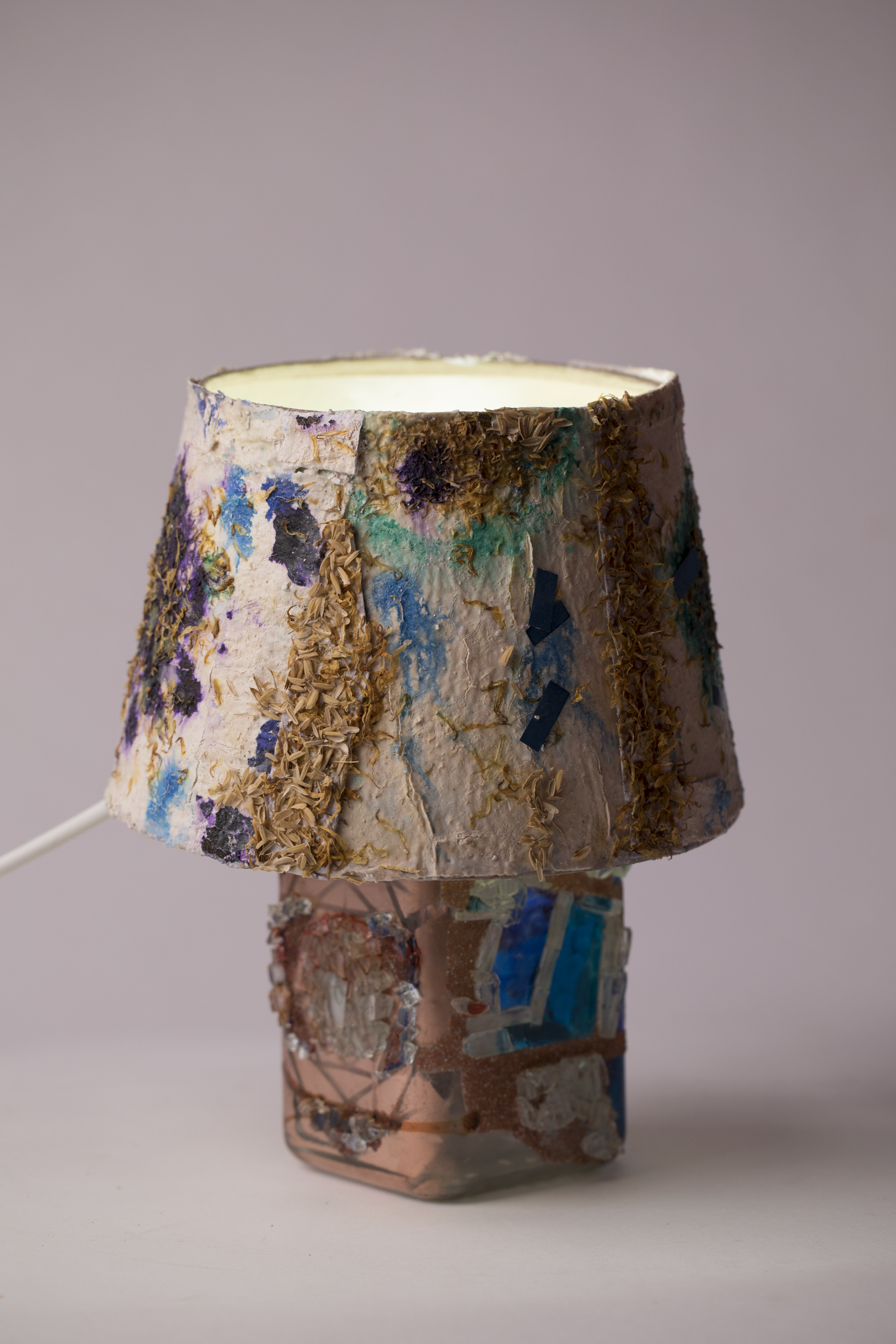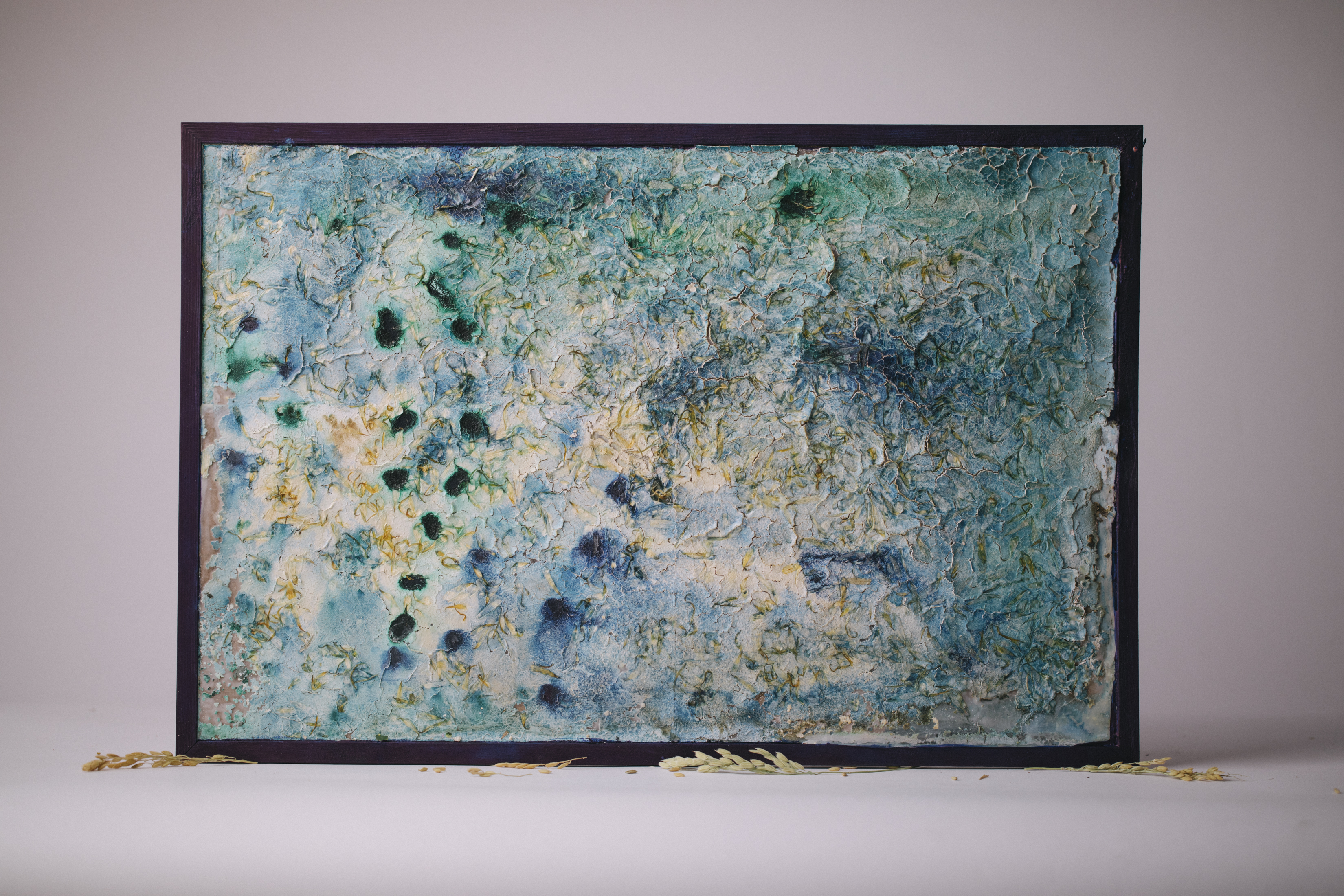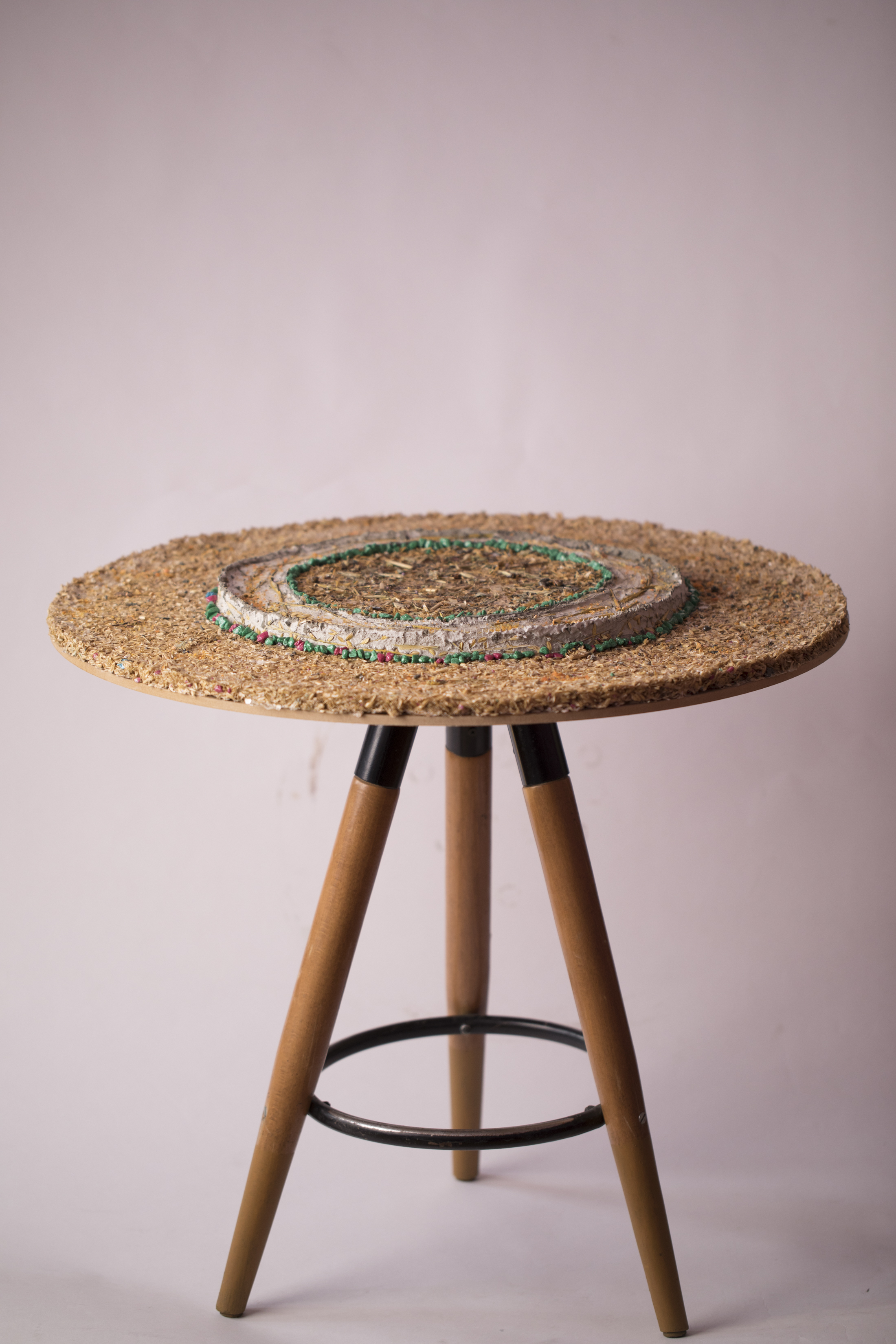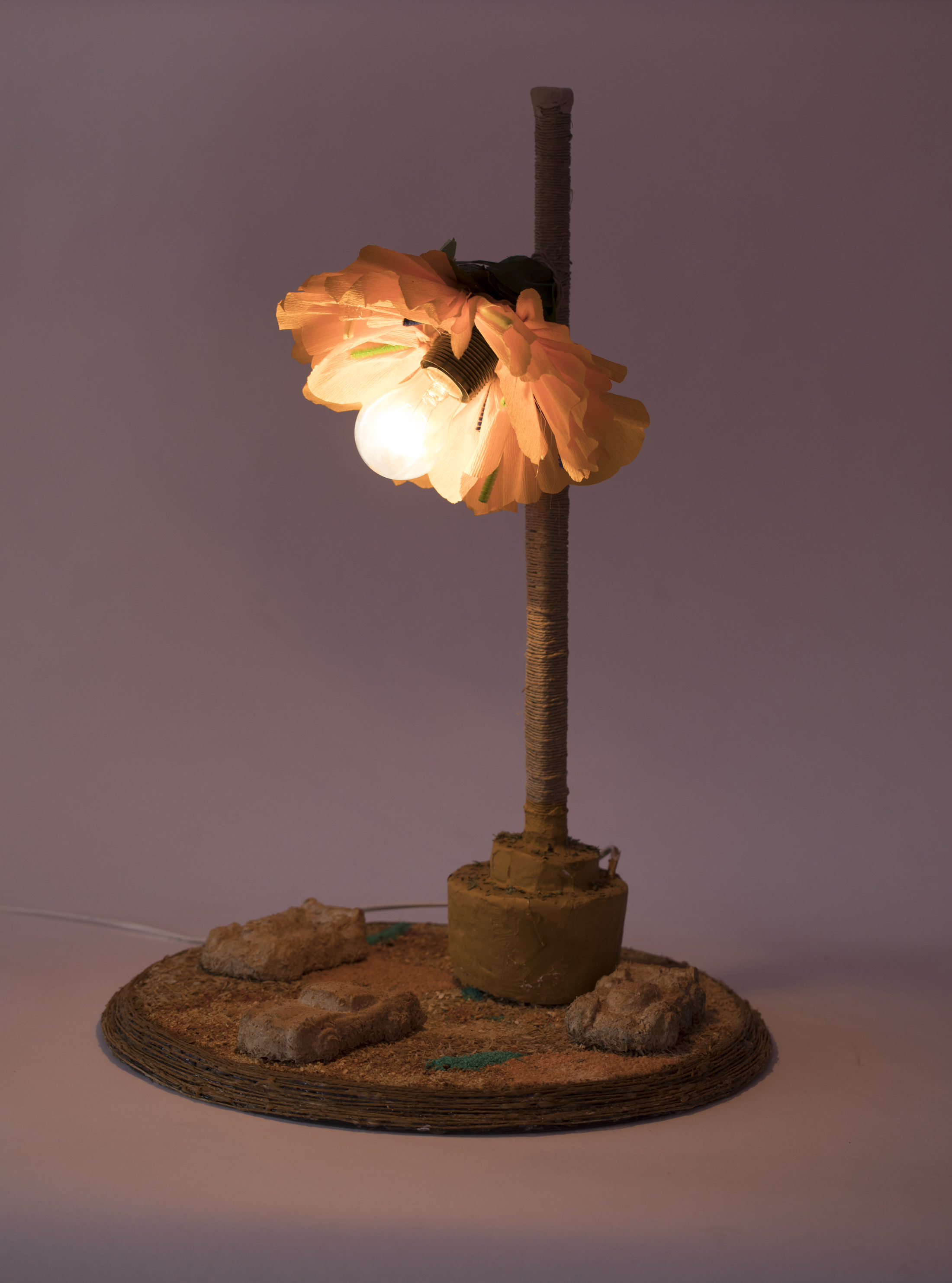Shaping a circular industrial ecosystem and supporting life-cycle thinking
Rise for Rice
Rice for Rice
Rise for Rice project aims to use rice waste, such as: rice straw, rice husk and rice flour, in order to save the rice fields from the large wildfires on the territory of the Municipality of Kočani (North Macedonia) and to obtain designs and a prototype-design of products, such as: furniture, decorative objects, rice paper, lamps, pigments and textile materials.
North Macedonia
Regional
Municpality of Kočani
Municipality of Zrnovci
Village Orizari
Village Grdovci
Village Pribacevo
Municipality of Zrnovci
Village Orizari
Village Grdovci
Village Pribacevo
It addresses urban-rural linkages
It refers to other types of transformations (soft investment)
Yes
2023-03-23
No
No
No
As a representative of an organisation
The main objectives of the project are: reproduction of rice waste by their organisms and the risk of fires started by certain groups of farmers. Also, the project aims at eco-design and sustainable design, by increasing the demand for prototype designs and ideas from rice waste to a number of users. This refers to products such as: benches, tables, coffee tables, chairs, children's toys, lamps, decorative objects, vases, rice paper, pigments, etc. Target groups of the project are: farmers, ecologists, biologists, designers, artists, craftsmen, researchers, scientists, enthusiasts, students. The achieved goals of the project are: reduced amount of rice waste, reduced risk of fires and clean environment. Also, the achieved goals refer to innovation in design, more precisely, eco-design, an innovative approach to the practicality and functionality of products. The project is of a sustainable nature, with a circular work process, which starts from the selection of rice waste (in the laboratory), and continues to the studios, workshops, fairs, exhibition halls, virtual reality, etc.
Eco-friendly
Circular
Sustainable
Design
Eco-industry
Municipality of Kočani, known as the city with the largest amount of cultivated rice in the territory of North Macedonia, is dealing with serious consequences of the rice residues after the rice harvest: rice straw, rice pulp, rice flour. The rice fields, after harvesting, remain covered with rice residues (about 12 tons of rice waste annually). The waste is then burned by the farmers, in order to get rid of the burden in a faster way, without inappropriate ecological awareness of the consequences they inflict on the environment and the population near the rice fields. This, unfortunately, happens every year in a row, incurring small, minimal fines that have so far failed to resolve the rice waste case and the awareness of the consequences they inflict on the environment. The Rise for Rice project takes care to introduce sustainability as a key component, which will make a change in the future treatment of rice fields and will raise awareness of the importance of maintaining and selecting this type of rice waste, as well as to give an example of an existing creative thread that can transform rice waste into successful, practical and sustainable product. The waste needs to be dislocated from the rice fields and transported to the laboratory, where the following transformations will take place, such as: production of benches, decorative objects, rice paper, furniture, textile cloth, pigments, etc. The products will be presented through a circular business platform, which will be sustainable and persistent in its goals.
In terms of aesthetics, the Rise for Rice project can fulfill this thread by keeping the design within the boundaries of beauty and fine arts. The products that will be made from rice waste will be pre-sketched and thought through chronological examples of art, design and decoration. Rice as a material offers an opportunity for the production of painting pigments, with which can additionally be colored from the characteristic color of the rice waste. Products will be designed to offer pleasing qualities, such as: color,(with given attention to earthy, harmonious colors, which convey and evoke calm, balance and harmony); texture (to get more types of texture); shape (more types of shapes from one type of product/design). The products will confirm the quality of experience for people through which they will discover their own identity, personality, and make it seem more consistent and authentic. This type of design will help people to express themselves and show individuality and uniqueness, but at the same time, to spread a sustainable and ecological message, as well as to be a part of a social group.
The Rise for Rice project introduces inclusion in its activities by activating the responsibility of several target groups: people who process the rice fields and rice waste, people who will transport the waste with appropriate vehicles (trucks), people who will contribute and assist in the design of products, people to be hired for web design, people to be hired for book/catalog design and people who will be able to attend and learn about the process of processing rice waste and its different ways of transformation into a product - in the form of workshops that will be pre-organized through public calls on social media. This group of people will be directly involved and will be distributed according to age limits; each of the groups will be able to acquire educational content for treatment and selection of rice waste (rice straw, rice husk, rice flour) and how to use them in the production of certain products: benches, tables, chairs, lamps, decorative vases, flower vases, children's toys, textile canvas, painting pigments, etc. Each of these groups will be directly (or indirectly) included in the project activities, while each of these events will be photo and video documented. At this stage, the vision of the project is for these documented forms to grow into small newspapers that will be printed on handmade rice paper; The newspaper will be published quarterly and will publish educational content about the rice waste processing stage, factual content about the reduction of rice waste, circular economy and environmental treatment of the targeted locations of the project. Through this, the visibility of the project will be increased, and at the same time, the availability of this information and activities to as many people as possible, in an online form and in physical form.
Citizens will benefit from the project by eliminating as much rice waste as possible and purifying the rice fields. This means that there will be fewer fires after rice harvests and less toxic particles polluting the air, water and environment. This will affect the citizens of the Municipality of Kočani, as well as the citizens of the villages: Orizari, Pribachevo, Cheshinovo, Grdovci, Oblesevo, and the Municipality of Zrnovci. Citizens also can and will be involved in project activities that include: selection of rice waste by truck and deporting the waste to appropriate laboratories where it will be selected and processed; will be involved in activities such as: workshop for making paper by hand, workshop for making benches, workshop for making lamps, workshop for making chairs, workshop for making decorative objects, workshop for making textile materials from rice waste. The impact of citizens' involvement in this type of activity is of great importance for these locations, because it will raise awareness to a higher level and sublimate a new idea for using the potential of rice waste, which until now, except as food for certain birds, no other suitable method of application has been found. This will help reduce polluted water, soil and air. Through a given example of making products from rice waste, which besides being ecological and aesthetic, also have a practical application in everyday life, the people of these areas will be shown new ways of treating what is in their immediate vicinity, with a vision to encourage and expand the idea even further. This implies greater engagement and opportunity for employment and training of persons from vulnerable categories, as well as persons from marginalized or excluded groups from society. People of this type need stimulation and focus on activities that will stimulate their creativity, imagination and improve their economic situation. These are the goals that should be achieved as effective for the civil society.
At the local level, the stakeholders were engaged in-situ, that is, the rice waste left on the rice fields, through direct selection of the rice waste and its deportation from the rice fields to the laboratories/workshops. Regionally, the stakeholders were involved through a public call in the activities to select the waste and to spread the word about the danger of burning the rice waste, which is caused by the farmers every year, in order to quickly get rid of the huge amounts that remain on the rice fields. The regional action has also expanded to other cities in North Macedonia, with the greatest interest in the capital city of Skopje, where experts and researchers of this problem have called for additional cooperation and assistance in the analysis. Then, the artists and artisans who make handmade products got involved with the desire to organize more workshops, in more locations. At the national level, the Municipality of Kočani, a city that is a symbol of rice, expanded the idea and shared the products with different news houses, social media, researchers, biologists, farmers, artists from different cities and districts in North Macedonia, while through additional printing of catalog and newspaper, the national level visibility will be even greater and accessible to people. The project, with the help of NEB, has a vision to grow on an international level. In this way, the same procedures will be able to be applied in other countries that face the same or a similar problem, and also the connection between creators, artists, researchers and enthusiasts who want to work on this type of project(s) will increase. The added value of all of the above is a cleaner environment, an economy that circulates and profits, as well as a creative fusion that can expand the boundaries of manufactured objects and concepts that will grow through local, regional, national and/or international collaborations.
The project reflected the fields of production of: furniture (tables, chairs, benches), lamps, decorative products, textile canvas, painting pigments, etc., that is, knowledge in the field of design and fine arts.
Regarding the treatment and selection of rice waste, the knowledge and skill to recognize the quality, quantity, humidity and/or dryness of rice waste and the division of the same into different groups for the possibility of making different types of products were reflected. The knowledge and skills of hired mentors were also highlighted for the implementation of workshops for the production of products (handmade paper workshop, workshop for children's chairs, workshop for tables, workshop for lamps, etc.). The representatives of these fields communicated through the superior project manager and coordinator, who organized the events and meetings for the development and successfully implemented activities of the project. Some of the representatives were found through recommendations from other collaborators in the project. Each of the representatives connected and complemented each other in a chain. This means that each previous activity as a cause, consequently bears and connects the following activity. Thus, through a built chain of activities and communication, the project showed great success and productivity in the area of all the listed manufactured products, which are almost all hand-made. From artists, artisans, biologists, pharmacists, laboratory workers, scientists, researchers, enthusiasts, farmers, gallerists, creative directors, web designers, graphic designers, fashion designers, etc., all these forms of disciplines are represented in the design and implementation of the project.
Regarding the treatment and selection of rice waste, the knowledge and skill to recognize the quality, quantity, humidity and/or dryness of rice waste and the division of the same into different groups for the possibility of making different types of products were reflected. The knowledge and skills of hired mentors were also highlighted for the implementation of workshops for the production of products (handmade paper workshop, workshop for children's chairs, workshop for tables, workshop for lamps, etc.). The representatives of these fields communicated through the superior project manager and coordinator, who organized the events and meetings for the development and successfully implemented activities of the project. Some of the representatives were found through recommendations from other collaborators in the project. Each of the representatives connected and complemented each other in a chain. This means that each previous activity as a cause, consequently bears and connects the following activity. Thus, through a built chain of activities and communication, the project showed great success and productivity in the area of all the listed manufactured products, which are almost all hand-made. From artists, artisans, biologists, pharmacists, laboratory workers, scientists, researchers, enthusiasts, farmers, gallerists, creative directors, web designers, graphic designers, fashion designers, etc., all these forms of disciplines are represented in the design and implementation of the project.
The innovative side of this project is based on new ways of using and treating rice waste. For the citizens who live (or work) next to the rice fields, i.e. the mentioned areas/locations, this innovative practice will give them and offer ideas for additional multiplication of the chain of the circular economy, as well as the number of types of products that will be produced.
The innovation in this project also gives freedom for new concepts in the use of rice waste, in the laboratory, in the atelier, in the workshop, in the factory, etc.Through this fact, like-minded people could further connect and create new concepts and ideas in their work area, through project activities, such as: waste selection (straw, husk, flour), waste transport, furniture making, decorative items, textile canvases (textile fibers), benches (which can be applied in a park or other public location), etc. Through the mentioned products made from rice waste, the public will be offered this type of innovation, which would be easily and positively accepted, of course, and applied in such environments. The products would have a practical, aesthetic and inclusive application and contribute as one of the many positive examples of eco-design and the presence of biodegradable materials that are not harmful for use, but have the ability to be used in durable components when mixed with other ingredients. At the local and regional level, the innovative activities will contribute to the introduction of a new sample for design that has not been applied or developed in the mentioned cities and surrounding settlements. This approach will provide citizens with a new, fresh category of items and products that they can use and enjoy. For the young population, these activities will arouse interest in conservation and protection in other locations and regions that are ecologically threatened. The time period of realization of the activities can vary, from 9 months to 15 months.
The innovation in this project also gives freedom for new concepts in the use of rice waste, in the laboratory, in the atelier, in the workshop, in the factory, etc.Through this fact, like-minded people could further connect and create new concepts and ideas in their work area, through project activities, such as: waste selection (straw, husk, flour), waste transport, furniture making, decorative items, textile canvases (textile fibers), benches (which can be applied in a park or other public location), etc. Through the mentioned products made from rice waste, the public will be offered this type of innovation, which would be easily and positively accepted, of course, and applied in such environments. The products would have a practical, aesthetic and inclusive application and contribute as one of the many positive examples of eco-design and the presence of biodegradable materials that are not harmful for use, but have the ability to be used in durable components when mixed with other ingredients. At the local and regional level, the innovative activities will contribute to the introduction of a new sample for design that has not been applied or developed in the mentioned cities and surrounding settlements. This approach will provide citizens with a new, fresh category of items and products that they can use and enjoy. For the young population, these activities will arouse interest in conservation and protection in other locations and regions that are ecologically threatened. The time period of realization of the activities can vary, from 9 months to 15 months.
The project methodology is based on a timeline that counts 9 activities:
1.Collection and selection of rice waste from rice fields;
2.Organizing a public call to citizens to register their physical presence at workshops, laboratories, studios, etc., for the production of various products;
3.Organization of different types of workshops and lectures on the topic: Processing of rice waste (straw, husk, flour) and production of new products: rice paper, furniture, benches, decorative elements/objects, painting pigments, textile canvas (textile fibers);
4.Awarding of certificates for the students' participation in the workshops, by the mentors (artists, scientists, laboratory workers, researchers, craftsmen, designers, etc.);
5. Documenting the products made from rice waste (photo and video documentation), sharing and visibility of project activities through book/catalog printing, website sharing and social media sharing;
6. Organizing an exhibition of the items in several cities in North Macedonia, familiarizing the visitors with the work process through discussions, photo and video documentation;
7. Continuation of the production of products from rice waste in interested areas, cities and/or settlements; inviting significant figures from the fields of design, art, science, agriculture, biology, etc., organizing debates and joint collaborations, openness to receiving new ideas and concepts for utilizing rice waste through the production of practical and aesthetically designed ideas and concepts.
8. Exhibition of manufactured products at various fairs, exhibitions, galleries, several times a year; sharing and expanding the idea in order to increase awareness of the danger of burning rice waste; visibility of the products in other countries and regions;
9. Organizing debates and speeches in different cities and settlements in North Macedonia in order to promote the project's activities and to spread the message about the use of eco-materials in the design.
1.Collection and selection of rice waste from rice fields;
2.Organizing a public call to citizens to register their physical presence at workshops, laboratories, studios, etc., for the production of various products;
3.Organization of different types of workshops and lectures on the topic: Processing of rice waste (straw, husk, flour) and production of new products: rice paper, furniture, benches, decorative elements/objects, painting pigments, textile canvas (textile fibers);
4.Awarding of certificates for the students' participation in the workshops, by the mentors (artists, scientists, laboratory workers, researchers, craftsmen, designers, etc.);
5. Documenting the products made from rice waste (photo and video documentation), sharing and visibility of project activities through book/catalog printing, website sharing and social media sharing;
6. Organizing an exhibition of the items in several cities in North Macedonia, familiarizing the visitors with the work process through discussions, photo and video documentation;
7. Continuation of the production of products from rice waste in interested areas, cities and/or settlements; inviting significant figures from the fields of design, art, science, agriculture, biology, etc., organizing debates and joint collaborations, openness to receiving new ideas and concepts for utilizing rice waste through the production of practical and aesthetically designed ideas and concepts.
8. Exhibition of manufactured products at various fairs, exhibitions, galleries, several times a year; sharing and expanding the idea in order to increase awareness of the danger of burning rice waste; visibility of the products in other countries and regions;
9. Organizing debates and speeches in different cities and settlements in North Macedonia in order to promote the project's activities and to spread the message about the use of eco-materials in the design.
In the project, almost all of the listed activities from the previous question could be replicated, except for the first activity, which is limited to certain locations from which it will be possible to collect and select the rice waste (from the rice fields in Kočani Municipality, Zrnovci Municipality, Orizari village, Grdovci village, Pribachevo village). The same applies to the users of the project and the involved participants: project activities can be realized in multiple locations, with different groups of people (experts, biologists, artists, craftsmen, ecologists, researchers, enthusiasts, fashion designers, furniture designers, etc.) For example, the workshops of the project can be realized in different cities (beyond those already mentioned above); this will be feasible through agreements with certain workshops, studios and/or institutions from other cities and/or settlements, and opening of new public calls for participation in the project activities. There is also the possibility of visiting rice fields and rice waste (in-situ) by a group of people living and working in other cities and/or settlements. This will also contribute to the educational side of the project, where the participants will be able to consider the origin of the rice waste and the visible changes caused by the burning of the rice waste, which may be visible even after one or two years.
By providing local solutions, the project will provide a global response/solution for handling rice waste and reduce the number of fires caused by rice waste, as well as provide a solution for a clean environment, clean water in rice fields and clean air. The project's activities will provide a global answer on how through the process of selection, the rice waste can be preserved and used as an eco-material. The manufactured products will exemplify practicality, functionality and aesthetic application, which can be hand (or semi-hand) made by a team of people.
In the mentioned book/catalog, the information about the ingredients and the combined media for each of the manufactured products will be published, so that anyone who enjoys eco-design will be able to make them. The same information will be shared on an officially designed website for the project, where everyone will be able to read the content in an online format, as well as stream videos of workshops and/or exhibitions, speeches, research. The book/catalog will also be shared on the website, which will be globally accessible and visible. Such an approach, apart from locally, will be able to solve the same types of problems at the global level. Above all, the most important starting point that will be solved locally and will make the biggest positive change on a global level is the displacement of rice waste from rice fields in workshops, studios, laboratories, galleries, salons and other institutions, where the practical application will come to the fore.
In the mentioned book/catalog, the information about the ingredients and the combined media for each of the manufactured products will be published, so that anyone who enjoys eco-design will be able to make them. The same information will be shared on an officially designed website for the project, where everyone will be able to read the content in an online format, as well as stream videos of workshops and/or exhibitions, speeches, research. The book/catalog will also be shared on the website, which will be globally accessible and visible. Such an approach, apart from locally, will be able to solve the same types of problems at the global level. Above all, the most important starting point that will be solved locally and will make the biggest positive change on a global level is the displacement of rice waste from rice fields in workshops, studios, laboratories, galleries, salons and other institutions, where the practical application will come to the fore.
The results of the project activities will, first of all, play a major role at the ecological level: to protect the environment from pollution and arson in the rice fields. The other results are visible through the production of the products, which are a benefit for direct and indirect users. Supporters of this type of design could order a certain product design and have it made by the students involved in the project. The results of the project will be visible through physical, tangible products and the organization of debates, exhibitions, speeches with physical presence (direct beneficiaries), as well as promotion and visibility of the products and other activities of the project through social media (indirect beneficiaries). The impact of the Rise for Rice project is of great importance, as it includes and encompasses solving problems in multiple categories, such as: environment, ecology, eco-design, circular economy, eco-business models, visibility and local and/or global communication. The impact and results of the project would be acceptable even after the completion of the project activities, while they can positively influence the participants in the project by learning different techniques of combining rice waste with other materials and media, such as: cement, sand, resin, plaster, etc.
The benefits of this project guarantee a clean future environment and a new aspect of eco-design, which will contribute to greater development and application, both in the territory of North Macedonia and on a global scale.
The benefits of this project guarantee a clean future environment and a new aspect of eco-design, which will contribute to greater development and application, both in the territory of North Macedonia and on a global scale.

